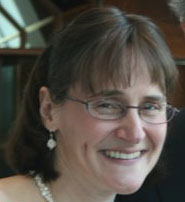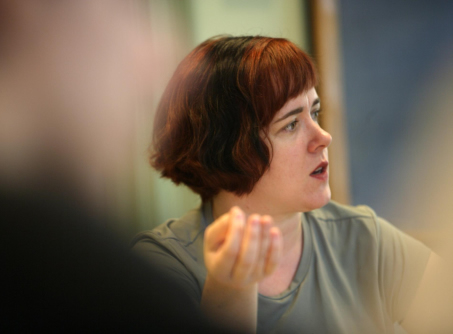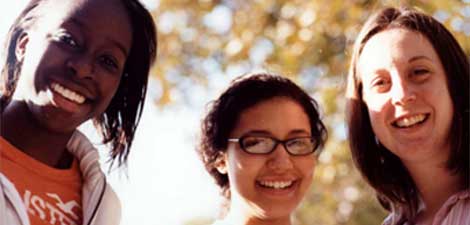Christmas at this church means a creche with live animals
By Emily Olsen
In the beginning of December the newly set-up stable and pen outside Old First Reformed Church, a United Church of Christ church, was empty. Signs posted around the edges alternated between verses from Christmas gospel and “Don’t feed the animals.” The animals were not there yet, but they would be soon.
Old First Reformed, on the corner of fourth and Race Street in Philadelphia is known for the live-animal crèche it puts up each year. The Reverend H. Daehler Hayes first began the crèche tradition in 1973 and it has been a part of Christmas at Old First ever since.
The live crèche is set up each year in the tradition of Saint Francis of Assisi. According to legend, it was Saint Francis who first set up the scene of the nativity with actors and live farm animals.
The current crèche holds six animals: a calf, a donkey, two sheep and two goats. They are borrowed from a farm in Bucks County.
Keith Haberern directed church volunteers in building the crèche on the Saturday after Thanksgiving. The basic set up is a pen with a stable area in the back. The animals can go underneath the stable for shelter. Mannequins, dressed as members of the Holy Family, shepherds, and wise men are also set up inside the stable. A small fence keeps the animals from knocking them over.
Haberern, 50, has been in charge of building the crèche for the last 20 years. He is an architect and engineer, who also plays mandolin during church services.
Originally the crèche was built out of debris from the church and surrounding buildings after Old First was restored in the late 1960s. By now, most parts have been replaced except for the roof beams. Over the years Haberern has worked to make the set-up of the crèche safer.
“One of the miracles of the crèche is that no one has gotten killed setting it up” said Haberern with a grin.
●
After the stable and pen structure is set-up, there is still more to do. The mannequins have to be brought up from the basement and dressed. Rosemary Poll, the church secretary is in charge of dressing the mannequins with the help of the pastor, the Rev. Dr. Manuel Shanaberger, and the volunteer coordinator, Kevin Waltz.
“I hate that job” said Poll, 66.
The mannequins are past their prime, to say the least. Poll described them as held together with duct tape.
“We have to tie them upright in the stable since their stands are broken” said Poll.
Old First used to have the mannequins repaired in Delaware County, but Poll said at this point they are beyond saving. It was never an easy trip anyway.
Years ago one of the volunteers offered to drive the mannequins to be repaired up in Delaware county, said Poll. Unfortunately he couldn’t fit all of them in his car. Finally, he ended up tying the last mannequin onto the car roof.
“People slowed down and honked” said Poll, laughing. “It was a wonder he wasn’t pulled over by the police.”
For the rest of the year, the mannequins are placed in a closet, where they terrorize unsuspecting volunteers.
“It’s quite a shock to open a closet and find a whole bunch of naked mannequins” said Poll.
Kevin Waltz, has had special experience with the mannequins. During his first week at the church Waltz, 23, mistakenly opened the closet where the mannequins were kept.
“A mannequin flew out at me” he said. “I didn’t know about the crèche at the time and I thought this was just a very weird church.” Continue reading →






